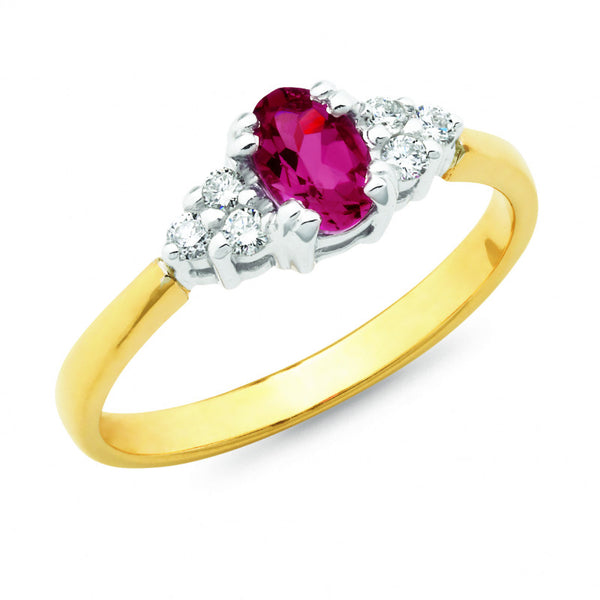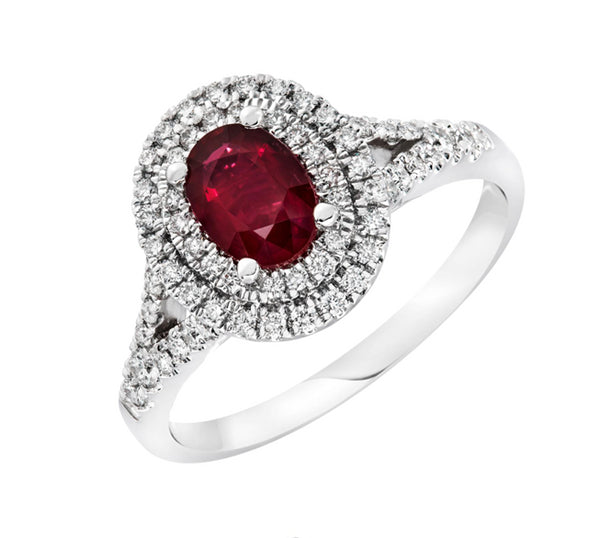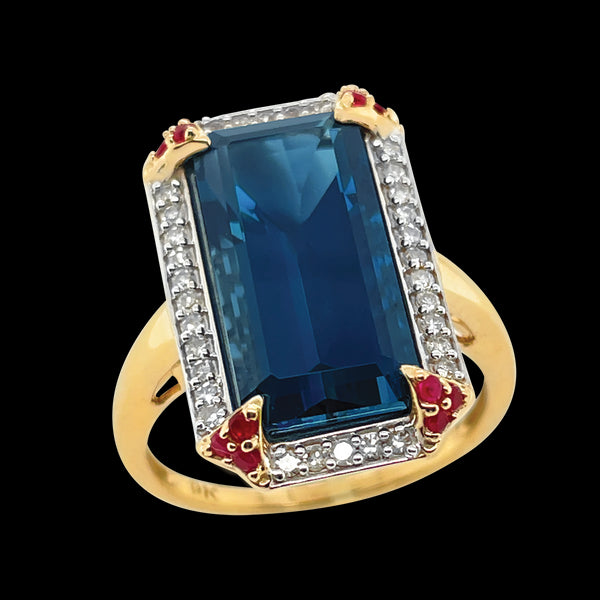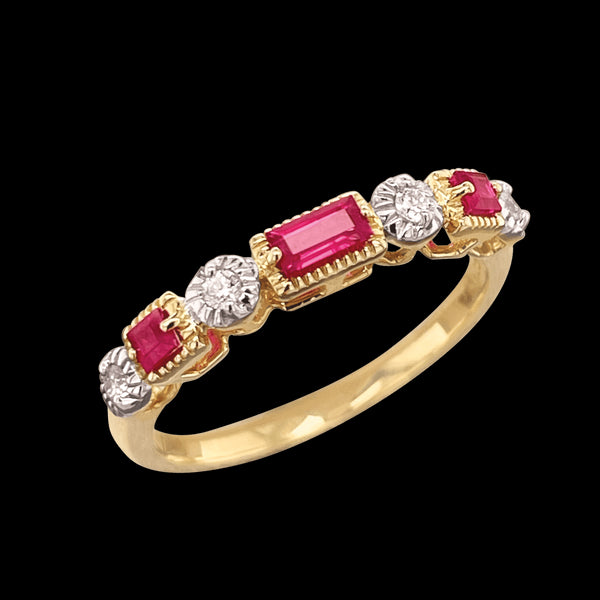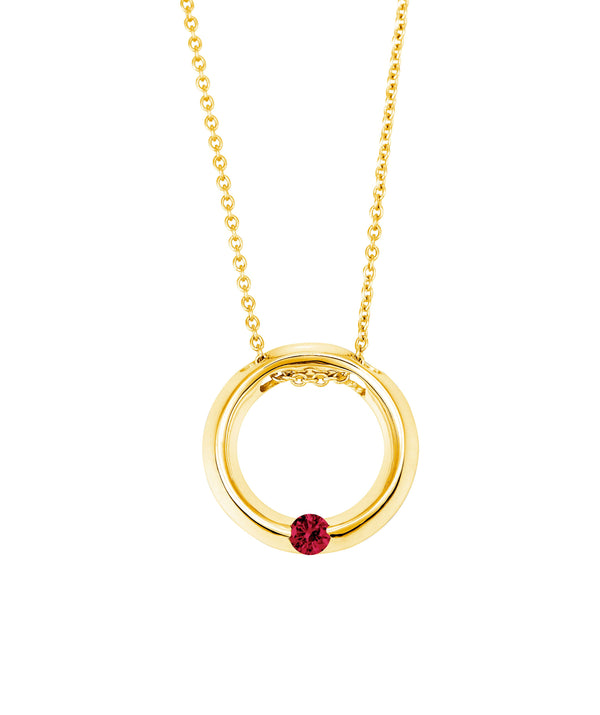Are Rubies Found in Australia?
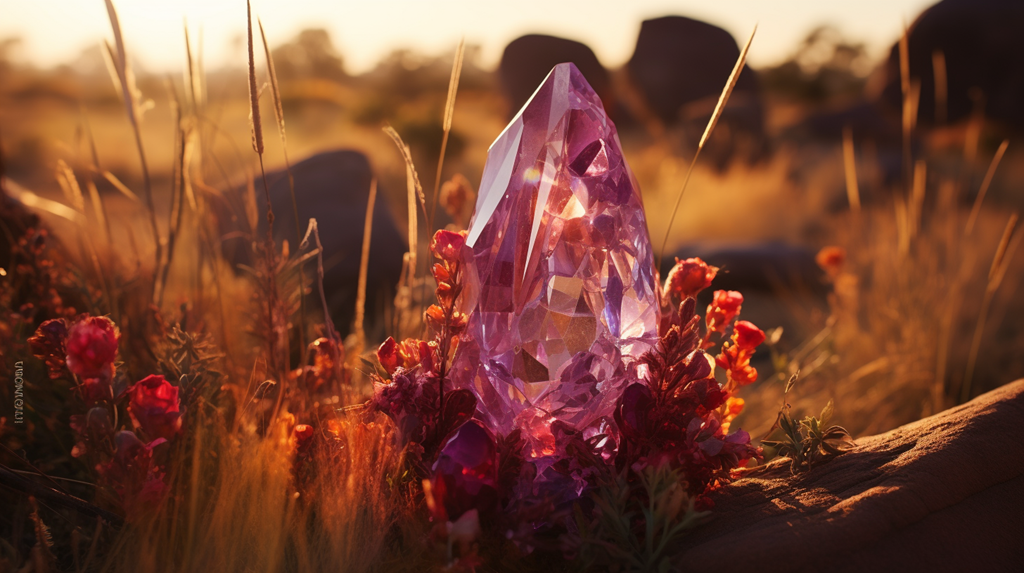
Australia's mineralogical wealth extends beyond the well-known opal fields and diamond mines, encompassing a variety of precious gemstones, including rubies. While not as prominent on the global stage as sources from countries like Myanmar or Sri Lanka, Australia does indeed harbor deposits of rubies, primarily located in the rugged terrains of New South Wales and Queensland. The exploration and extraction of rubies in Australia have a history that, while relatively modest, contributes to the country's diverse mining sector. These rubies, often characterized by their unique color properties and geological formations, offer gem enthusiasts and professionals alike an opportunity to explore and appreciate the nuances of Australian gemology. Identifying Australian rubies involves recognizing their distinct features, which may differ from those of rubies found in other parts of the world.
Australian Ruby Locations
Within the rugged terrains of Australia, precious rubies have been discovered in specific locations such as the New England area of New South Wales and the Central Queensland gemfields. These occurrences of corundum, the mineral species to which rubies belong, are geologically associated with metamorphic rocks and alluvial deposits. The genesis of these rubies is typically linked to the tectonic and metamorphic history of the Australian continent, which provides the necessary conditions for ruby formation, namely, high pressure and temperature.
The New England area, particularly around Glen Innes, is renowned for its mineral-rich grounds and the historical mining activities that have taken place. Rubies found in this region are often recovered from alluvial deposits alongside sapphires, reflecting the area's prolific geological conditions for the development of corundum. The gemstones are usually extracted using traditional mining techniques, including sifting and washing of soil and sediment.
In contrast, Central Queensland gemfields, encompassing localities such as Anakie and Rubyvale, are well-established sources of corundum gemstones, including rubies. The volcanic pipes and basaltic soils of this region are indicative of the past volcanic activity that has contributed to the formation and transport of gem-quality rubies. The rubies from this area are often characterized by their distinctive color and clarity, though they may not always reach the vivid red hues found in other notable ruby deposits around the world.
The exploration and extraction of rubies in these Australian locations are subject to rigorous environmental and regulatory scrutiny. Economic viability and gemstone quality are critical factors that influence the commercial development of these resources. Scholarly analysis of Australian rubies contributes to the broader understanding of gemstone formation, regional geology, and the potential for future discoveries within the continent.

Quality of Australian Rubies
Australian rubies, while relatively abundant, typically exhibit a spectrum of quality ranging from opaque and heavily included specimens to those of reasonable clarity and color saturation. The gemological characteristics of these rubies are influenced by the geological processes that formed them, which in turn affects their aesthetic and commercial value.
The evaluation of ruby quality is multifaceted, considering factors such as color, clarity, cut, and carat weight—the traditional four C's of gemstone assessment. Australian rubies are subjected to this rigorous scrutiny to determine their place within the global market. It is noteworthy that the quality of rubies can be enhanced through various treatment methods, although such practices must be transparently disclosed to maintain integrity within the gemstone industry.
To emphasize the attributes that influence the quality of Australian rubies, consider the following points:
- Color: The ideal color for rubies is a vibrant, deep red with a hint of blue, commonly referred to as "pigeon's blood." Australian rubies often lean towards a darker hue, with varying degrees of saturation.
- Clarity: Like all rubies, Australian varieties may contain inclusions. The level of these inclusions can affect the gem's transparency and brilliance. Rubies with fewer inclusions are considered of higher quality.
- Cut: The expertise in cutting can maximize the ruby's visual appeal, enhancing its brightness and color. Australian rubies that are well-cut can exhibit enhanced beauty despite inherent clarity or color limitations.
- Carat Weight: Larger rubies are rarer and thus often command higher prices. Australian rubies tend to be smaller in size, which may impact their market value.
History of Ruby Mining
Since the late 19th century, ruby mining in Australia has been intermittently carried out, with several deposits discovered across the continent. The genesis of these deposits can be traced to the Proterozoic era, with geological processes leading to the formation of ruby-bearing rocks. The mining activities, albeit sporadic, have revealed Australia's potential to produce rubies, albeit not always of gemstone quality.
The historical trajectory of ruby mining in Australia underscores a pattern of opportunistic exploitation rather than systematic development. Initial discoveries, often by prospectors seeking other gemstones or minerals, led to short-lived rushes that quickly dissipated upon the realization of the rubies' variable quality. These discoveries were primarily concentrated in the New England area of New South Wales and the Central Queensland gemfields. However, despite these early finds, the country's ruby deposits have never been fully exploited, often overshadowed by more profitable and abundant resources such as sapphires and opals.
The analytical examination of the mining processes reveals a predominance of small-scale operations, typically employing basic methods of extraction. This aligns with the broader historical context of Australian gem mining, characterized by artisanal miners rather than large-scale industrial entities. Moreover, it reflects the challenges inherent in ruby mining, particularly the difficulty in locating primary ruby deposits as opposed to secondary alluvial deposits.
Identifying Australian Rubies
Despite the country's modest ruby production, gem-quality rubies are indeed present in Australia, distinguishable by their unique characteristics. The process of identifying these precious stones involves a meticulous examination of their physical and chemical properties, which bear the indelible signature of their Australian origin.
Australian rubies are typically found in metamorphic rocks such as marble and schist, which have undergone extensive geological transformations. When comparing Australian rubies to those from other renowned locations like Myanmar or Thailand, there are several key indicators that gemologists and geologists look for to authenticate their provenance.
To emphasize the distinctiveness of Australian rubies, consider the following attributes:
- Color Saturation: Australian rubies often exhibit a strong red hue with purple undertones, differing from the more common pigeon blood red found in Southeast Asian rubies.
- Inclusions: These rubies may contain unique inclusions, such as zircon crystals, which can be a telltale sign of their Australian origin.
- Fluorescence: Under ultraviolet light, many Australian rubies display a strong fluorescence, which is not as prevalent in rubies from other localities.
- Trace Elements: Spectroscopic analysis often reveals higher concentrations of chromium and lower levels of iron in Australian rubies compared to their international counterparts.
These distinctive features provide a framework for the identification of Australian rubies. Analytical techniques, including spectroscopy and microscopic inspection, allow experts to decipher the complex story of each gemstone, ensuring authenticity and provenance. Thus, despite their rarity, Australian rubies contribute a unique chapter to the global anthology of gemstones.

Conclusion
In conclusion, while Australia is not the most renowned source for these precious stones, it does harbor ruby deposits of variable quality. The nation's ruby mining history, though modest compared to other gem-producing regions, contributes to the broader narrative of global gemstone extraction. Australian rubies can be identified by their unique characteristics and, interestingly, represent less than 1% of the global ruby market, underscoring the rarity and potential uniqueness of Australian-sourced specimens in the gemstone domain.
-
Posted in
Rubies, Rubies Found in Australia, ruby

